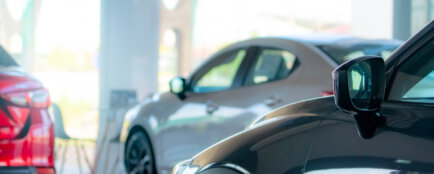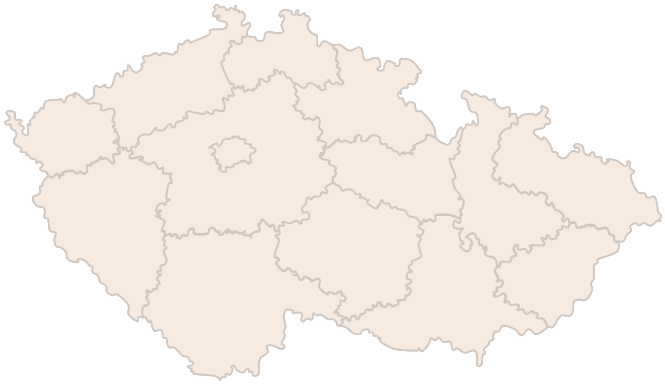In this article, we show you when and how you can really save VAT, whether you are a corporation with a turnover of hundreds of millions, a sole trader following the registration threshold, or an ordinary family. We’ll add specific examples, explain the new EU and Czech regulations, and add tips on how to fill in the documents correctly so that the discount doesn’t disappear at the first check.
What is VAT and why you (don’t) pay it
Value added tax is an indirect tax levied by the state on almost every sale of goods or services. The standard rate of VAT is 21% from 1 January 2025; the only reduced rate is 12% and applies to selected items, such as certain foodstuffs or aids for disabled people.
The VAT payer pays the tax to the State and can also deduct input VAT (i.e. on the supplies received). A non-VAT payer, on the other hand, does not pay or deduct the tax because he does not claim it on his invoices.
Are you solving a similar problem?
Not sure how to do your taxes properly so you don't get it wrong?
We can help you navigate the law, whether it’s dealing with a specific tax situation, preparing for an audit by the tax authority or defending yourself in court.
I want to consult
- When you order, you know what you will get and how much it will cost.
- We handle everything online or in person at one of our 6 offices.
- We handle 8 out of 10 requests within 2 working days.
- We have specialists for every field of law.
When you can buy VAT-free as a taxpayer
If you are a taxable person, you can deduct input VAT on most purchases that are related to your economic activity. In practice, this means that the VAT-excluded price is the actual cost to you and the VAT amount is just an interim item that you then offset on your return.
Example: you buy a machine for CZK 121,000 (price including VAT). The tax base is CZK 100,000 (price excluding VAT), VAT is CZK 21,000. You deduct the CZK 21,000 on your return and your actual expenditure is CZK 100,000.
Reverse charge scheme
If you sell goods or services under the reverse charge, you do not include VAT on the invoice at all – only the amount net of tax and the note “reverse charge”. The tax is then declared and paid by your customer if he is a VAT payer
If, on the other hand, you are the customer, you will calculate the VAT on your tax return and claim it as a deduction immediately, so you will not be financially burdened by the transaction. This mechanism is only used for selected trades, typically in the construction industry or for the sale of metals and some electronics.
Intra-community acquisitions of goods and services
If you buy goods from another EU member state and you are a taxpayer, the supplier will usually issue you an invoice without VAT after verifying your VAT number. You declare the tax yourself in the Czech Republic and immediately claim it as a deduction. The result is again zero impact on cash flow.
When you can buy VAT-free as a non-taxpayer
You remain a non-taxpayer until your turnover per calendar year exceeds CZK 2,000,000. From 1 January 2025, however, you will not only follow the traditional annual turnover test, but also a special limit of CZK 2,536,500, after which you become a taxable person the very next day.
There is also a new cross-border regime for small businesses: a non-taxpayer can sell and buy in an EU member state and claim their own exemption without having to register for VAT abroad, provided the conditions are met.
How to purchase without VAT as a non-taxpayer or non-entrepreneur
Although VAT is usually borne by the final consumer, there are situations where you, as a “regular person” (i.e. a non-taxpayer), actually purchase goods or services on which you do not pay tax or where the tax does not appear on the receipt at all. When does this happen?
Duty free or buying when travelling outside the EU
When you fly from the Czech Republic to a third country (for example, for a holiday in Turkey), you can buy perfumes or electronics in a duty-free zone without VAT. The shop is allowed to sell the goods tax-free because the delivery takes place outside the EU tax territory. If you bring them back, customs regulations set personal import limits:
- €430 per person for air or sea transport,
- €300 for land travel,
- €200 for persons under 15 years of age.
If you exceed the limit, customs will charge you VAT and possibly customs duty.
Purchase from a non-VAT payer (bazaar, advertisement)
If you buy a car or furniture from a person who is not a business or VAT payer, you will not find any tax on the receipt – the sale of private property is not subject to VAT. Similarly, in brick-and-mortar bazaars or online marketplaces you will often find taxpayers using a special regime for second-hand goods: the seller only pays tax on the margin, so you won’t see VAT on the receipt.
Goods and services permanently exempt from VAT
Educational courses, healthcare, insurance, financial services or renting a flat are all supplies on which VAT is not charged at all, so the end consumer does not pay it.
Practical example
Imagine you buy a smartwatch for €350 in duty free during your holiday in Dubai. When you arrive in Prague, do you exceed the personal limit of EUR 430? No – you are under the limit, so you do not pay any VAT. If the watch cost €500, customs would charge 21% VAT and possibly duty on the difference of €70.
How to calculate the price without VAT
If you need to work out how to deduct VAT from the amount on your receipt, follow a simple equation:
- Determine the rate. The rate is 21% for most goods and services and 12% for selected items.
- Price without VAT = Price with VAT ÷ (1 + rate/100). Example.
- VAT amount = Price with VAT – Price without VAT. In the example, it is CZK 210.
This is how you can quickly calculate the price without VAT for any purchase.
How to correctly issue an invoice without VAT
Non VAT payer
As a non-taxpayer you will indicate on the document:
- company name, VAT number, name of the supply;
- the price excluding VAT and the total amount, often the same, because VAT is not indicated;
- a statutory phrase such as “I am not a VAT payer”
Reverse charge
If you use reverse charge, you add, for example, the sentence “The tax is paid by the customer” and state the tax base excluding VAT. The recipient (payer) completes the calculation in the return.
Intra-community trade
In the case of an invoice to the EU with a valid VAT number of the counterparty, you add e.g.: “Exempt from tax according to § 64 of Act No. 235/2004 Coll.” You fill in the basis without VAT and attach a summary report.
The most common mistakes and how to avoid them
Many people still think that buying VAT-free guarantees zero administration, but the reality is different. In the reverse charge scheme, you must enter the correct transaction code in the control report or the tax office will quickly ask you to correct it.
In the case of intra-community acquisitions, it is the timely submission of a summary declaration, the correct classification of the transaction in the tax return and careful transport records that prove the actual movement of goods between countries that make the difference.
Non-payers of VAT should also remember that the law does not allow them any deduction. In each of these cases, keeping the required records consistently and archiving documents for the period of time required by the tax code protects your wallet and your reputation.
Summary
VAT in the Czech Republic will remain at the standard rate of 21% and a single reduced rate of 12% from 1 January 2025. Taxpayers can “buy VAT-free” primarily through input tax deductions, a reverse charge scheme for selected domestic transactions and intra-community acquisitions where an EU supplier invoices tax-free.
The entrepreneur remains a non-taxpayer up to a turnover of CZK 2,000,000, but from 2025 a limit of CZK 2,536,500 for immediate registration has been added. Non-entrepreneurs will encounter tax-free purchases, for example, in a duty-free zone when travelling outside the EU, when buying second-hand goods from a non-taxpayer or for permanently exempt supplies (healthcare, insurance, renting a flat, etc.).
Frequently Asked Questions
As a tourist from a non-EU country, can I recover VAT on purchases in the Czech Republic and what do I need to do so?
Yes. If you live permanently outside the EU, spend at least CZK 2,001in one shop and export the goods within three months of the month of purchase, you can claim a “tax-free” VAT refund.
I am exporting goods by post to a third country; can I claim VAT exemption even if I do not personally travel with the purchase?
You can, if you can prove physical export – typically by submitting a customs declaration slip and a receipt for the parcel by post or courier. The taxable person who sold the goods will then apply the 0% rate (exemption) and you will pay the tax-free price.
I want to buy a car in Germany and register it in the Czech Republic. When do I pay VAT and when not?
If the vehicle is new (within 6 months of registration or within 6,000 km), you pay VAT only in the Czech Republic at the time of registration, at the rate of 21%. If it is used and sold to you by a private person or a dealer under the margin scheme, you do not pay any extra VAT – the price remains as stated in the contract
Is the exchange of cryptocurrencies subject to VAT?
No. The exchange of bitcoin and other virtual currencies for regular money is considered an exempt financial service. Therefore, if you buy or sell cryptocurrencies, VAT does not apply.
Can I save on VAT when installing home photovoltaics?
Yes. From 1 January 2024, the installation of PV and heat pumps will fall under the reduced 12% rate. If you install a system on a single-family home, you will pay less than the standard 21% rate and the savings will be further increased by government subsidies. However, the material itself remains at the 21% rate unless it is billed as part of the installation package.
I bought goods under reverse charge, but the supplier later opted out of VAT. Am I at risk of being charged tax?
No. The status of the supplier at the time of performanceis decisive . If he was a taxpayer and the reverse charge regime was correctly applied, your obligation to declare and deduct tax remains valid and does not change. Later cancellation of the supplier’s registration does not change your tax liability.




